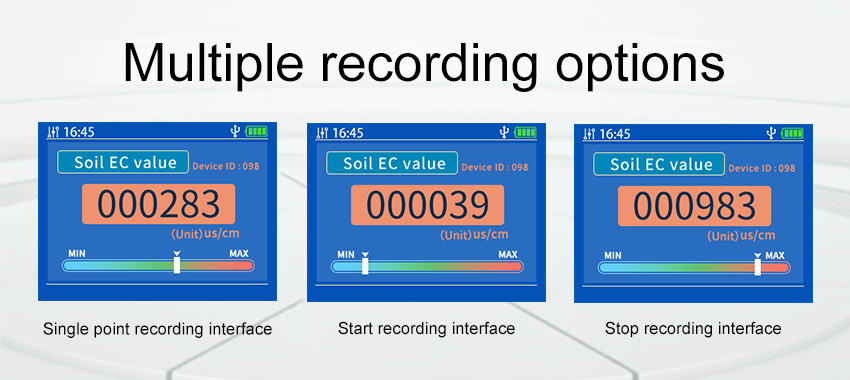Agriculture has been a fundamental part of human civilization for thousands of years. Over time, it has evolved from simple subsistence farming to complex, industrialized systems that can produce vast amounts of food. However, these systems are often inefficient, unsustainable, and harmful to the environment. In recent years, there has been a growing interest in smart agriculture, which uses technology to make farming more efficient, sustainable, and profitable. One of the key technologies in smart agriculture is soil sensors.

Soil sensors are devices that measure various parameters of the soil, such as moisture
temperature, pH, and nutrient levels. They can be placed in the soil or attached to plants to provide real-time data that farmers can use to make informed decisions about irrigation, fertilization, and other aspects of crop management. Soil sensors can also be used to monitor soil health, detect diseases and pests, and predict crop yields.
There are several types of soil sensors available on the market
each with its own strengths and weaknesses. Capacitive sensors, for example, measure soil moisture by detecting changes in electrical capacitance. They are relatively inexpensive and easy to use, but they can be affected by soil salinity and temperature. Tensiometers, on the other hand, measure soil moisture by monitoring the tension or suction of the soil. They are more accurate than capacitive sensors but require more maintenance and can be expensive.
Other types of soil sensors include temperature sensors
which measure the temperature of the soil, and pH sensors, which measure the acidity or alkalinity of the soil. Nutrient sensors can also be used to measure the levels of nitrogen, phosphorus, and potassium in the soil, which are essential for plant growth.
Soil sensors are not only useful for farmers, but also for researchers and policymakers. By collecting data on soil health and crop yields, they can help to identify trends and patterns that can inform agricultural policies and practices. They can also help to develop new technologies and innovations that can improve the efficiency and sustainability of agriculture.
The benefits of soil sensors are numerous
They can help farmers to conserve water by providing real-time data on soil moisture levels, which can be used to optimize irrigation schedules. They can also reduce the use of fertilizers and pesticides by providing accurate data on nutrient levels and pest infestations. This not only saves farmers money but also reduces the environmental impact of agriculture.
In addition to these benefits, soil sensors can also improve crop yields and quality. By providing precise data on soil conditions, farmers can optimize their crop management practices to ensure that their crops are healthy and productive. This can lead to higher profits for farmers and a more stable food supply for consumers.
The future of smart agriculture is bright
and soil sensors are likely to play a major role in its development. As the technology becomes more advanced and affordable, it will become increasingly accessible to farmers around the world. This will enable them to make better decisions about crop management, conserve resources, and reduce the environmental impact of agriculture.
However, there are also challenges that need to be addressed
One of the biggest challenges is the lack of standardization in soil sensor technology. There are many different types of sensors available on the market, and they often use different measurement units and algorithms. This can make it difficult for farmers to compare data from different sensors and make informed decisions.
Another challenge is the lack of infrastructure in many rural areas
Soil sensors require a reliable source of power and a means of transmitting data to a central location. In many developing countries, these resources are scarce, which can limit the adoption of soil sensor technology.
Despite these challenges, the potential benefits of soil sensors are too great to ignore. With the right policies and investments, soil sensors can help to transform agriculture into a more efficient, sustainable, and profitable industry. They can help farmers to produce more food with less resources, reduce the environmental impact of agriculture, and improve the livelihoods of millions of people around the world.

In conclusion, soil sensors are a key technology in smart agriculture, and they have the potential to revolutionize the way we produce food. By providing real-time data on soil conditions, they can help farmers to make informed decisions about crop management, conserve resources, and reduce the environmental impact of agriculture. However, there are also challenges that need to be addressed, such as standardization and infrastructure. With the right policies and investments, soil sensors can help to create a more sustainable and prosperous future for agriculture.
